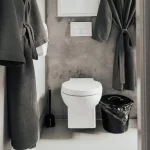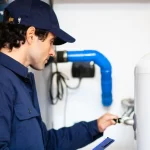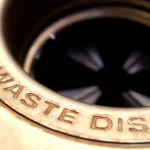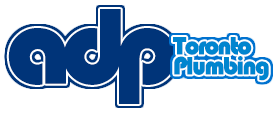Every homeowner has to deal with leak detection at some point. Whether it’s because you have old, leaky pipes, broken drains or damp closets, it’s essential that you find and repair the water leaks before they cause lasting damage. Now there’s a hot (literally!) new way to detect leaks using thermal or infrared imaging, which enables experts to see where the water may be coming from without having to open up your walls, dig up paving and floors or otherwise cause major repair work.
What is Thermal Imaging?
Thermal imaging uses an infrared camera to photograph and identify the areas where moisture and wetness might be coming from. When a water leak exists, it usually covers a bigger area than just the section that has visible water damage. Whether the water comes from external or internal sources such as:
– Toilets or sinks
– Tub overflows
– Broken washing appliances
– Aircon condensation
– Roof drains, or
– Downspouts
leak detection using infrared technology will expose the temperature changes caused by the water.
How it Works
This leak detection technology works by recording the level of heat transmitted by the surfaces filmed, converting the warmth into images of the infrared light spectrum. The images show the variations in temperature of the area filmed, making it possible to spot contrasting warmer and colder areas. If your leak is caused by warm water escaping, it will show up as closer to red in color at the point of escape; if the water is cold, either to begin with or once it reaches the area you are filming, it shows in shades of blue and green in comparison to its surroundings.
Benefits
Apart from the obvious advantages of early leak detection, this method of finding the problem is quick and easy to implement. Although the equipment requires a fairly large capital outlay, once it’s paid for there are no consumables to budget for. The biggest advantage is the non-invasive aspect of the technology and the fact that leaks can be identified without incurring additional labor costs. Your Toronto plumbers know how to read the images generated accurately, so if you suspect you may have a leak it’s a matter of a few minutes and you can find out for sure.
Disadvantages
There are very few disadvantages to this leak detection technology; however, it isn’t magic and a few do exist:
– Firstly, the camera isn’t able to measure how much moisture has penetrated – it can only identify the differences in temperature that could indicate a leak.
– It’s unable to detect the presence of subsurface mold or damage, and
– Not all Toronto plumbers have the technology available.
Check with your regular plumber to find out if they do thermal imaging, or if they perhaps have other methods of non-invasive leak detection they can use in your home.






